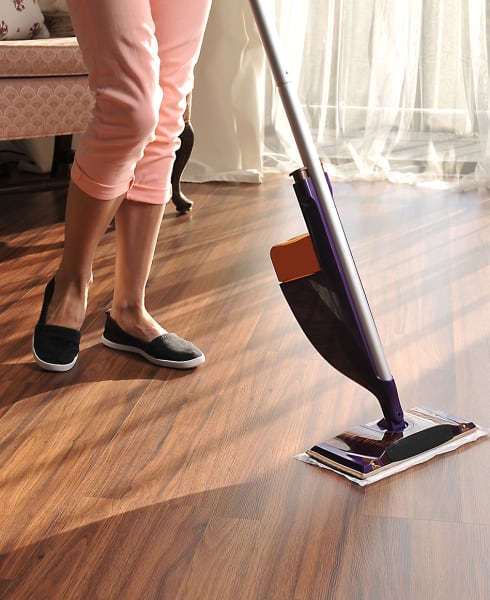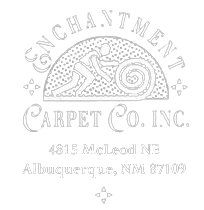Knowledge about vinyl maintenance
Flooring, no matter how new or beautiful, is meant to be walked upon. Vinyl flooring is no exception. Time and the onslaught of foot traffic will most certainly take its toll. But take heart, keeping your vinyl flooring as beautiful and inviting as the day it was installed just requires a little knowledge.
So check out the following advice and be a little smarter about smart and stylish vinyl flooring.
Consistency is the key.
New vinyl floors are extremely durable and long lasting, but like any floor covering they still need regular maintenance to stay looking like new.
Follow these general guidelines for vinyl flooring. For more detailed information always refer to the manufacturer's written floor care procedures.
Get in touch
Know this about time and temperature.
For the first 24 hours after your new vinyl floor is installed, protect all the seamed areas and don't walk on the seam sealer.
Keep the room at 68° F or greater for at least 2 days after installation to allow the adhesives to setup properly.
Do not roll heavy objects directly on to a newly installed vinyl floor for at least 5 days. This can cause the vinyl and adhesive to become compressed, and once the adhesive sets up any compressed marks will become permanent.
Allow 5 days before thoroughly washing your floor. This will give the adhesive time to cure.
It’s smart to spread your weight around.
Before moving heavy objects across your vinyl floor, hold on! Always lay plywood or underlayment sheets down to disperse the weight.
Before placing chairs or furniture on your new vinyl floor check the condition of all the casters or rollers before setting them on your floor. Replace any worn casters or rollers.
Protect your vinyl floor by covering the legs of furniture with felt protectors.
Get down and dirty with dirt.
Remove dust, sand and grit particles frequently by sweeping or vacuuming your vinyl floor.
Don’t use a vacuum with a beater bar as it may scratch your floor.
The attachments that come with your vacuum are useful to clean the edges or to get to hard to reach areas
When sweeping or vacuuming does not remove the dirt, mop the floor with clean warm water.
Rinse the floor thoroughly with fresh water. If water alone does not clean the surface, use cleaning products recommended by the manufacturer.
If you are unable to determine the manufacturer’s recommendations, use one tablespoon of liquid dish washing detergent to one quart of water.
Or use one tablespoon of clear ammonia to one quart of lukewarm water. Make sure you rinse the surface to avoid leaving behind a film.
Finally, think prevention. Place non-staining, walk-off mats or rugs at every outside entry to your room.
This will help keep sand and grit from being tracked on to your floor in the first place.
Just be sure to avoid using rubber-backed mats or rugs as they can damage and potentially discolor your floor.
Instead use mats or rugs made especially for vinyl floors and remember to treat them accordingly. Shake, shake, shake!
Spills happen. Use these tips.
For spots or spills, wipe them up immediately and use a clean cloth to wipe the cleaner onto the floor.
Make sure the floor’s manufacturer recommends the cleaner and that the product label indicates “self-cleaning,” meaning you will not get an accumulation of wax on your floor.
Rinse the spot or spill area thoroughly and wipe dry with a clean cloth.
Avoid using abrasive scrubbing tools as they will leave scratches.
Never use abrasive cleaners, soaps, paste waxes, or solvents on your vinyl floor.

How to get the old sparkle back.
If your floor becomes dull looking, first, try cleaning it with lukewarm water and clear ammonia to see if there’s a film on your floor causing the dullness. (Exact proportions of water to ammonia are stated above.)
If that doesn’t work, use the manufacturer's recommended floor polish to restore your vinyl floor to its original gloss level.
If you purchased a PVC vinyl floor you should consider placing 2-3 coats of the manufacturer’s recommended floor polish on the floor immediately.
Any vinyl floor with a PVC wearlayer will show scuffs, scratches and other marks very easily. By adding the coats of floor polish you will make the floor easier to maintain.
For serious damage, call on the pros.
If you have a seam open, cover it immediately, do not wash that area, and contact us for a vinyl floor covering professional to repair the seam.
If your floor gets a cut or gouge in it, cover the area immediately and call us. A professional installer can repair the area, but if the cut is filled with dirt it may be difficult to repair correctly.
For more maintenance information specific to your vinyl flooring, remember to consult the manufacturers’ recommendations.
You can’t avoid wear on your vinyl flooring, but knowing how to care for and maintain it can keep you floor in beautiful condition and make it a source of pride for years to come.







